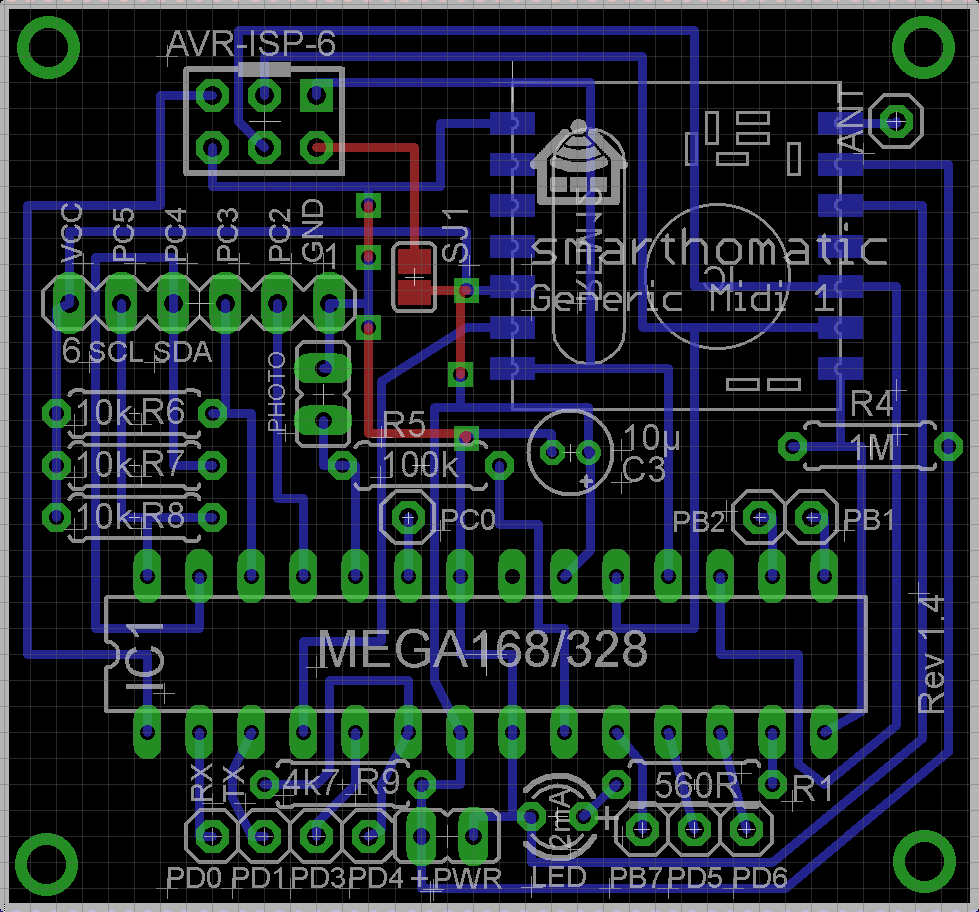This is an old revision of the document!
Table of Contents
UNDER WORK! DON'T USE THIS YET!!
Building up a Power Switch
Needed Parts and PCB
You need a PCB. You may use the layout from Github and etch it yourself or order the PCB or a complete kit.
Partlist (in buildup order)
maybe extra pins, at your opinion.
Buildup of PCB
As always: start from flat to high. Go through the partlist and solder the parts from the top ones to the last ones.
For some parts, you have to consider something special:
- IC holder: Look at the notch and place it in the right direction.
- LED: Solder it to a wire if you want to place the PCB in a housing later. Read the instructions on how to solder the LED to a cable. The longer wire of the LED is +. It goes into the hole more in the middle of the PCB.
- ISP Connector: The notch points to the side of the PCB (towards the voltage regulator).
- 10 uF Capacitor: The marked line is -, which points to the LED. On the PCB, + is labelled.
- Battery holder: + is the pin towards the middle of the PCB.
- ATMega: Before inserting it, you may want to check the voltage levels when switching the power on. Pin7 should have VCC (3V) against pin8 (ground). If you have different voltages: don't panic, nothing is broken, nothing is fried. Search your error. To insert the ATMega, bend the pins at 90 degreed by placing the ATMega on the table and bending it carefully. Then insert it into the IC holder. Be sure that you are not charged with electricity (ESD!) when touching the IC pins.
- RFM12B: You should also check the voltages first before soldering the module. At the place for the radio module the pad beside the antenna and at the opposite side the third pad should read about 3.3 V. For soldering, read the RFM12B mounting instructions.
(Image directly loaded from external GitHub source. If it doesn't work, fix link in wiki!)
Flashing the firmware
If you have a new ATMega where nothing is flashed onto, download a prebuilt binary package or build your own firmware. If you bought a hardware kit, the ATMega should already be flashed.
You can leave the batteries inserted all the time, no matter if you're currently flashing or using the device.
To make a “reset”, take one battery shortly out of its holder.
After flashing and switching the power on, your temp sensor should blink quickly for some seconds. After that, it only flashes shortly once whenever a temperature data packet is sent (>5 min).
Integrate it into a housing
describe it…

















